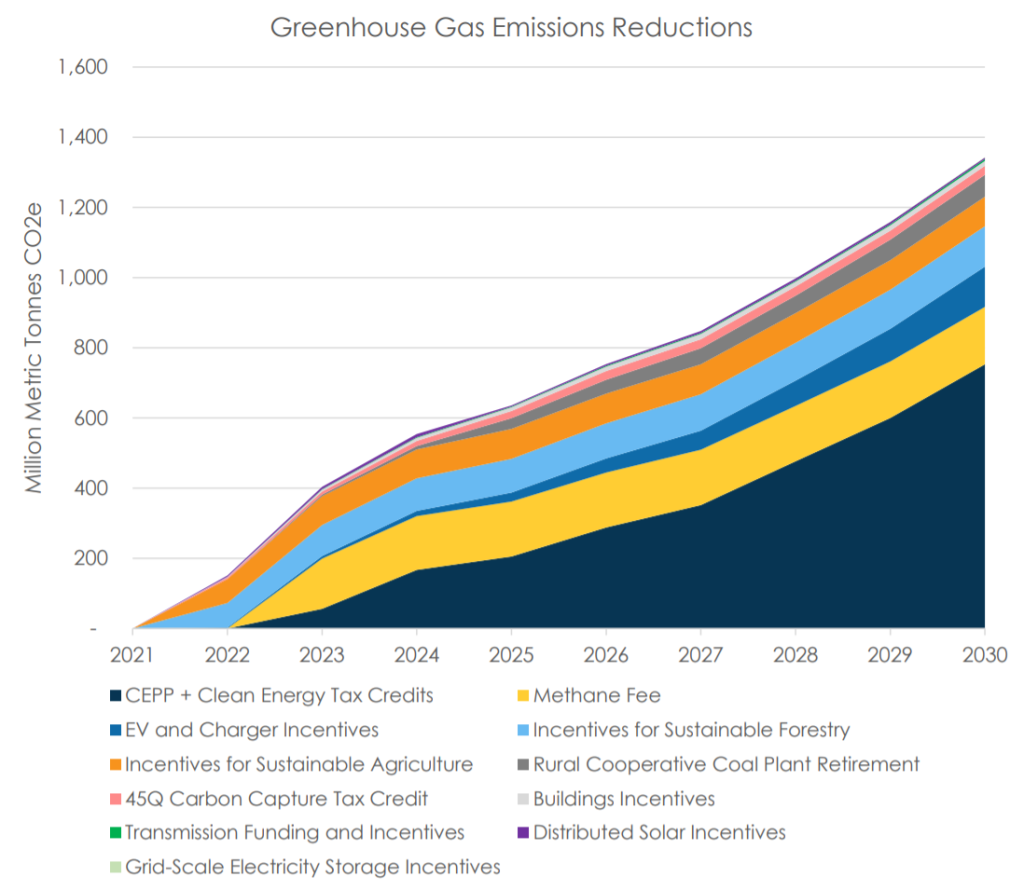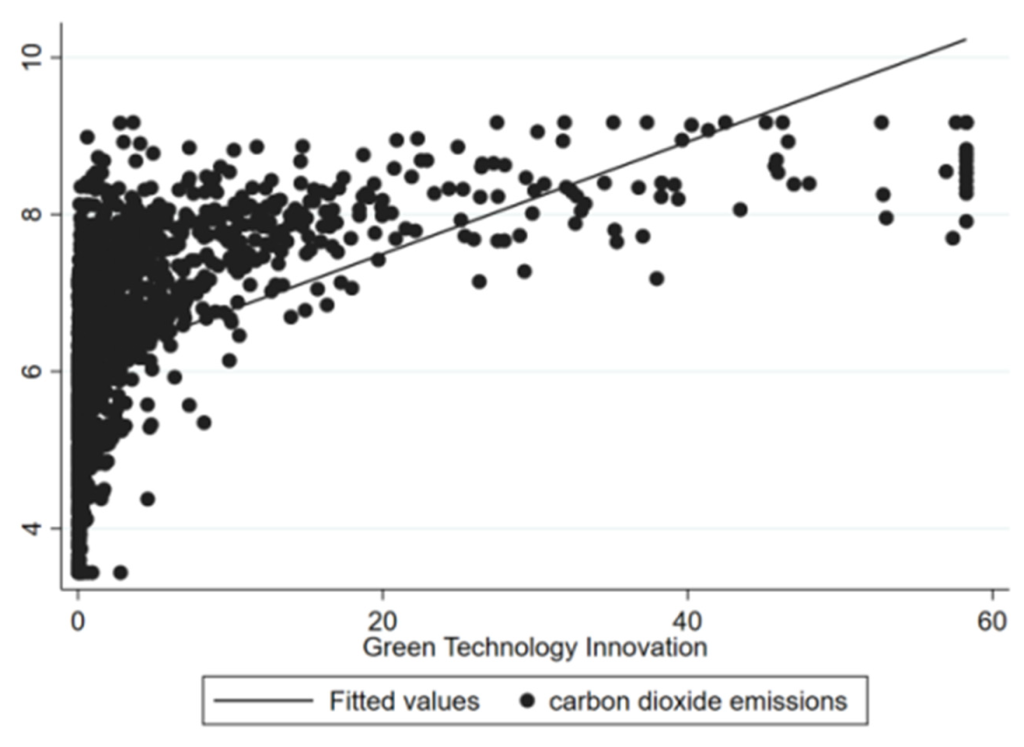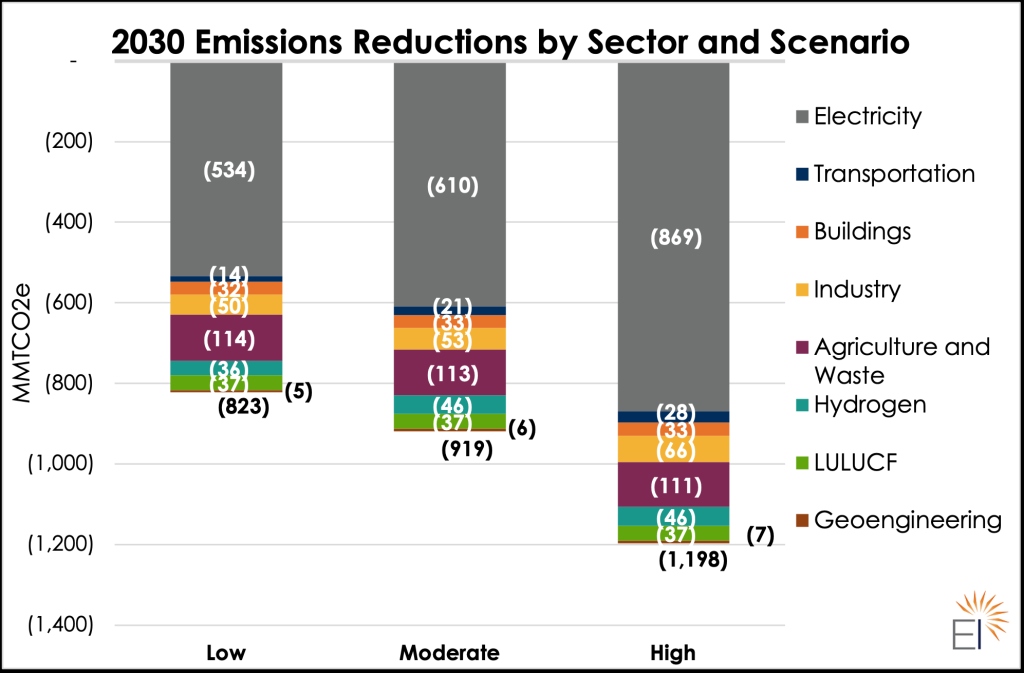Revolutionizing Emissions Reduction Through Technology Innovation: Take Action Now!
Technology Innovation Emissions Reduction
Greetings, Readers!
Welcome to this informative article on technology innovation emissions reduction. In today’s world, where the impact of climate change is becoming increasingly evident, it is crucial to explore innovative technological solutions that can help reduce emissions and mitigate the effects of global warming. In this article, we will delve into the various aspects of technology innovation emissions reduction, including its definition, importance, advantages, disadvantages, and implementation strategies. So, without further ado, let’s dive in!
3 Picture Gallery: Revolutionizing Emissions Reduction Through Technology Innovation: Take Action Now!



Introduction
Technology innovation emissions reduction refers to the development and deployment of advanced technological solutions aimed at reducing greenhouse gas emissions. These innovative technologies offer sustainable alternatives to traditional methods and help combat climate change. The focus of technology innovation emissions reduction is to minimize the environmental impact of various industries, such as energy, transportation, manufacturing, and agriculture.
Over the years, the global community has recognized the urgent need to address climate change and reduce carbon emissions. The Paris Agreement, signed by almost all nations, sets a goal to limit global warming to well below 2 degrees Celsius above pre-industrial levels. Achieving this goal requires transformative changes in our energy systems, transportation methods, and industrial processes – which can be achieved through technology innovation emissions reduction.
Now, let’s explore the key points and aspects of technology innovation emissions reduction:
What is Technology Innovation Emissions Reduction? 🌍

Image Source: energyinnovation.org
Technology innovation emissions reduction encompasses a wide range of innovative solutions that aim to reduce greenhouse gas emissions and mitigate climate change. These technologies include renewable energy sources, energy-efficient systems, carbon capture and storage, sustainable transportation, and eco-friendly manufacturing processes.
Renewable Energy Sources
Renewable energy sources, such as solar, wind, hydro, and geothermal power, offer sustainable alternatives to fossil fuels. By harnessing the power of nature, these sources generate clean energy without depleting natural resources or emitting greenhouse gases.
Energy-Efficient Systems
Energy-efficient systems focus on minimizing energy wastage and optimizing energy consumption. This includes efficient lighting systems, smart grids, energy-saving appliances, and building design techniques that reduce energy demands.
Carbon Capture and Storage
Carbon capture and storage (CCS) technologies capture carbon dioxide emissions from power plants and industrial processes, preventing them from entering the atmosphere. The captured CO2 is then stored underground or utilized for other purposes, reducing its impact on climate change.
Sustainable Transportation
Sustainable transportation technologies aim to reduce emissions from vehicles by promoting electric vehicles, hybrid cars, and alternative fuels. These technologies contribute to cleaner air and reduced dependence on fossil fuels.
Eco-Friendly Manufacturing Processes

Image Source: mdpi.com
Eco-friendly manufacturing processes focus on minimizing emissions and waste in industrial production. This includes adopting sustainable materials, recycling, waste reduction, and efficient resource management.
Who Benefits from Technology Innovation Emissions Reduction? 🌱
Technology innovation emissions reduction benefits various stakeholders, including individuals, communities, industries, and the planet as a whole.
Individuals
Individuals benefit from technology innovation emissions reduction through reduced energy costs, cleaner air, and improved health. By adopting energy-efficient appliances and using sustainable transportation options, individuals can contribute to reducing their carbon footprint and leading a more sustainable lifestyle.
Communities
Communities benefit from technology innovation emissions reduction by enjoying improved air quality, reduced pollution levels, and enhanced resilience against climate change impacts. Sustainable infrastructure and transportation systems make communities more livable and environmentally friendly.
Industries
Industries can benefit from technology innovation emissions reduction by adopting sustainable practices and reducing their environmental impact. This not only helps them comply with regulations but also improves their public image and attracts environmentally conscious customers.
The Planet

Image Source: energyinnovation.org
Ultimately, technology innovation emissions reduction benefits the planet by mitigating climate change, reducing greenhouse gas emissions, and preserving natural resources. By transitioning to sustainable technologies, we can create a cleaner and healthier planet for future generations.
When Should We Implement Technology Innovation Emissions Reduction? ⏰
Implementing technology innovation emissions reduction is an urgent matter that requires immediate action. The longer we delay the adoption of sustainable technologies, the more severe the impacts of climate change will become. Ideally, technology innovation emissions reduction should be implemented as soon as possible to accelerate the transition to a low-carbon economy.
Where Can We Implement Technology Innovation Emissions Reduction? 🌎
Technology innovation emissions reduction can be implemented in various sectors and industries globally. The key areas where these technologies can be applied include:
Energy Sector
The energy sector is a crucial area where technology innovation emissions reduction can have a significant impact. By transitioning from fossil fuels to renewable energy sources, we can reduce emissions from power generation and achieve a sustainable energy future.
Transportation Sector
The transportation sector is one of the largest contributors to greenhouse gas emissions. Implementing sustainable transportation technologies, such as electric vehicles and efficient public transportation systems, can help reduce emissions and combat air pollution.
Manufacturing Sector
The manufacturing sector can adopt eco-friendly manufacturing processes and technologies to minimize emissions and waste. This includes resource-efficient production techniques, circular economy practices, and sustainable supply chain management.
Agriculture Sector
The agriculture sector can implement technology innovation emissions reduction by adopting sustainable farming techniques, precision agriculture, and reducing methane emissions from livestock. This can help mitigate the environmental impact of agricultural practices.
Why is Technology Innovation Emissions Reduction Important? ❓
Technology innovation emissions reduction is of paramount importance due to the following reasons:
Addressing Climate Change
By reducing greenhouse gas emissions, technology innovation emissions reduction helps mitigate climate change and its adverse effects. It allows us to work towards achieving the climate goals set under the Paris Agreement and limit global warming to sustainable levels.
Preserving Natural Resources
Transitioning to sustainable technologies reduces our reliance on finite resources, such as fossil fuels. By utilizing renewable energy sources and adopting resource-efficient practices, we can preserve natural resources for future generations.
Improving Public Health
Reducing emissions and air pollution improves public health by minimizing respiratory diseases, cardiovascular problems, and other health issues associated with pollution. Clean air and a healthier environment contribute to a higher quality of life.
Stimulating Economic Growth
Investing in technology innovation emissions reduction can stimulate economic growth by creating new job opportunities, fostering innovation, and attracting sustainable investments. The transition to a low-carbon economy opens up avenues for economic development and competitiveness.
How Can We Implement Technology Innovation Emissions Reduction? 📈
Implementing technology innovation emissions reduction requires a multi-faceted approach involving various stakeholders, including governments, industries, and individuals.
Policy Support
Governments play a crucial role in implementing policies that promote technology innovation emissions reduction. This includes setting renewable energy targets, providing incentives for sustainable practices, and implementing regulations to reduce emissions.
Research and Development
Investing in research and development is essential to drive technological advancements in emissions reduction. Governments, industries, and academic institutions should collaborate to fund innovation projects and develop cutting-edge technologies.
Public Awareness and Education
Creating awareness about the importance of technology innovation emissions reduction is vital in encouraging individuals and communities to adopt sustainable practices. Educational campaigns, public outreach programs, and awareness initiatives can promote behavioral changes and drive the transition to sustainable technologies.
Collaboration and Partnerships
Collaboration between governments, industries, and organizations is crucial for the successful implementation of technology innovation emissions reduction. Public-private partnerships and international collaborations can facilitate knowledge sharing, resource mobilization, and technology transfer.
Investment in Sustainable Technologies
Investing in sustainable technologies is essential for their large-scale deployment. Governments and private investors should provide financial support and incentives to promote the adoption of technology innovation emissions reduction.
Advantages and Disadvantages of Technology Innovation Emissions Reduction
Technology innovation emissions reduction offers numerous advantages, but it also presents some challenges. Let’s explore the pros and cons:
Advantages (Pros)
1. Mitigating Climate Change
Technology innovation emissions reduction plays a crucial role in mitigating climate change and reducing greenhouse gas emissions. It offers sustainable alternatives to traditional methods and helps achieve climate goals.
2. Preserving Natural Resources
By transitioning to renewable energy sources and adopting sustainable practices, technology innovation emissions reduction helps preserve natural resources and reduces our reliance on finite fossil fuels.
3. Improving Public Health
Reducing emissions and air pollution improves public health by minimizing respiratory diseases and other health issues associated with pollution. Clean air and a healthier environment contribute to a higher quality of life.
4. Economic Opportunities
The transition to a low-carbon economy creates economic opportunities, such as job creation, fostering innovation, and attracting sustainable investments. Technology innovation emissions reduction stimulates economic growth and enhances competitiveness.
5. Enhanced Energy Security
Diversifying our energy sources by embracing renewable energy enhances energy security and reduces dependence on fossil fuel imports. This improves the resilience of the energy sector and reduces geopolitical risks.
Disadvantages (Cons)
1. High Initial Costs
Implementing technology innovation emissions reduction often requires significant upfront investments, which can be a barrier for some industries or countries with limited financial resources.
2. Technical Challenges
Developing and deploying innovative technologies may face technical challenges and require extensive research and development. Overcoming these challenges can be time-consuming and costly.
3. Transition Period
The transition from traditional methods to sustainable technologies may require a significant period, during which both old and new systems coexist. This can result in increased complexity and additional costs.
4. Resistance to Change
Resistance to change from existing industries and stakeholders may pose challenges to the widespread adoption of technology innovation emissions reduction. Overcoming resistance and encouraging behavioral changes can be a complex process.
5. Limited Scalability
Some technology innovation emissions reduction solutions may have limited scalability, making it challenging to implement them on a large scale. The availability of necessary resources and infrastructure can be a limiting factor.
Frequently Asked Questions (FAQs)
1. What are the main obstacles to implementing technology innovation emissions reduction?
The main obstacles to implementing technology innovation emissions reduction include financial constraints, resistance to change, limited scalability of certain technologies, and technical challenges in developing innovative solutions.
2. How can individuals contribute to technology innovation emissions reduction?
Individuals can contribute to technology innovation emissions reduction by adopting energy-efficient appliances, using sustainable transportation options, reducing waste and recycling, and supporting renewable energy initiatives.
3. Are there any successful examples of technology innovation emissions reduction?
Yes, numerous successful examples of technology innovation emissions reduction exist. Countries like Germany, Denmark, and Sweden have made significant progress in adopting renewable energy sources and implementing sustainable practices in various sectors.
4. Can technology innovation emissions reduction help create jobs?
Yes, technology innovation emissions reduction can create new job opportunities in sectors like renewable energy, energy efficiency, and sustainable transportation. The transition to a low-carbon economy stimulates economic growth and fosters innovation.
5. How long will it take to achieve significant emissions reduction through technology innovation?
The timeline for achieving significant emissions reduction through technology innovation varies depending on various factors, such as policy support, investment, technological advancements, and public awareness. However, immediate action is crucial to accelerate the transition and mitigate climate change.
Conclusion
In conclusion, technology innovation emissions reduction offers a promising path towards mitigating climate change and reducing greenhouse gas emissions. By embracing renewable energy sources, energy-efficient systems, sustainable transportation, and eco-friendly manufacturing processes, we can create a more sustainable and resilient future. While the implementation of technology innovation emissions reduction presents challenges, the benefits outweigh the drawbacks. It is crucial for governments, industries, and individuals to collaborate and take immediate action to address climate change and secure a better future for generations to come. Let us embrace technology innovation emissions reduction and make a positive impact on the planet!
Final Remarks
Friends, the importance of technology innovation emissions reduction cannot be overstated. It is our collective responsibility to adopt sustainable practices and support the development and deployment of innovative technologies. Together, we can create a greener and healthier planet for ourselves and future generations. Let’s take action today and pave the way for a sustainable and resilient future.
This post topic: Technology Innovation
